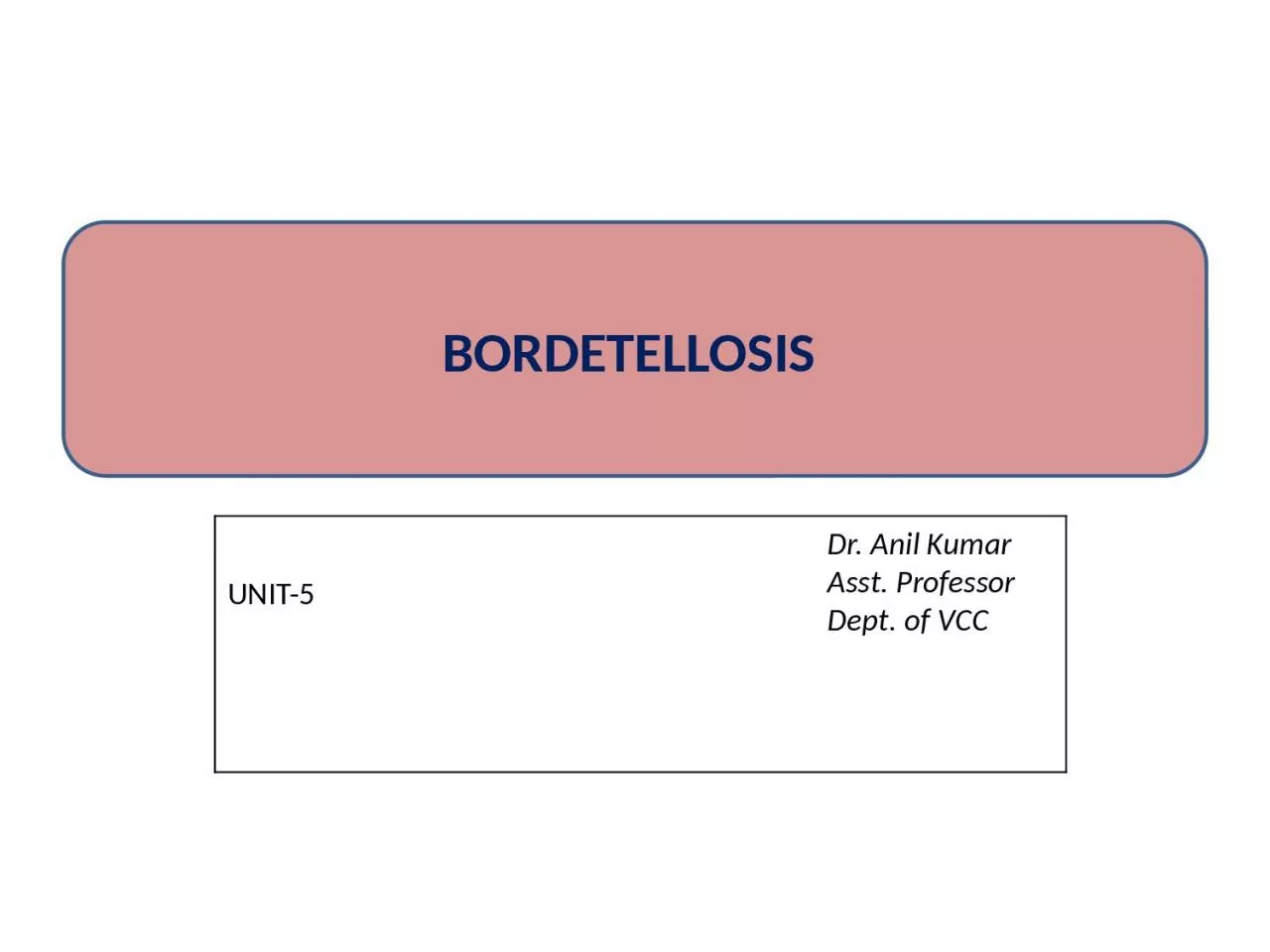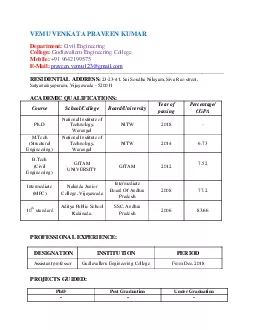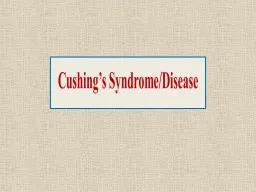PPT-UNIT-5 Dr. Anil Kumar Asst. Professor
Author : kylie | Published Date : 2022-06-15
Dept of VCC BORDETELLOSIS BORDETELLOSIS Bordetella also referred to as tracheobronchitis canine cough in dogs and feline bordetellosis in cats is a highly contagious
Presentation Embed Code
Download Presentation
Download Presentation The PPT/PDF document "UNIT-5 Dr. Anil Kumar Asst. Professor" is the property of its rightful owner. Permission is granted to download and print the materials on this website for personal, non-commercial use only, and to display it on your personal computer provided you do not modify the materials and that you retain all copyright notices contained in the materials. By downloading content from our website, you accept the terms of this agreement.
UNIT-5 Dr. Anil Kumar Asst. Professor: Transcript
Download Rules Of Document
"UNIT-5 Dr. Anil Kumar Asst. Professor"The content belongs to its owner. You may download and print it for personal use, without modification, and keep all copyright notices. By downloading, you agree to these terms.
Related Documents














